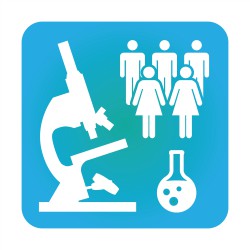Improved statistical methodology for small population group trials
From 2000 to 2010 in Europe alone, over 60 orphan drugs have been approved with the majority based on studies with sample size below 50. Ethical limitations and age variability in paediatric clinical trials also limit sample size, as do studies on personalised medicine where efforts to tailor therapies to individual patients’ needs significantly lower the participant number. Statistical methodology is well-accepted for validating the results of clinical trials and proving the efficacy and safety of new therapies. However, most statistical methods are suited for large population studies where assumptions on the validity of the methods are usually handled by increasing the sample size. This cannot be implemented in small group trials where the rarity of the disease or the sparse geographic distribution of patients hampers clinical trial recruitment numbers. On the other hand, prolonged recruitment time may lead to reduced motivation of patients as well as physicians. As a result, application of classical statistical methodology often overlooks treatment effects since only large effects can be observed. Lately, the applicability of standard clinical trial approaches to small populations has come under increasing scrutiny and criticism. There is an imminent need for adapting innovative methodologies in the setting of small sample population group trials. To address this, scientists of the EU-funded IDeAl project proposed to refine statistical methodology for application in small population group trials such as those testing novel therapies for rare diseases. Addressing the shortcomings of existing methods According to the guidelines of the European Medicine Agency, clinical trials should be designed based on benefit risk assessment and avoided if knowledge can be transferred from similar large population studies. ‘If information about the dose response relation is known in larger populations, such as adults, extrapolation would allow smaller clinical trials in the paediatric population,’ project co-ordinator Prof. Hilgers explains. When applied to small population size trials, conventional statistical methodology leads to reduced confidence. Furthermore, it cannot adequately address heterogeneity in patient outcome or the limited repeatability of clinical trials. To circumvent these issues, IDeAl researchers developed statistical methods to adapt the significance level and allow confirmatory decision-making in clinical trials with small populations. In addition, they developed methodology for the selection of the best practice randomisation procedure, a key technique used in clinical trials to avoid bias. Further achievements included modelling approaches for trial outcome analysis, methods accounting for individual responses as well as identifying biomarkers and prognostic scores in small sample studies. Clinical benefits The small numbers of patients that could be involved in trials of rare diseases means that alternative approaches are required that extract more information from patients or repeatedly measure them. ‘Clinical trials in small population groups could be made more efficient, so that therapies for rare diseases could be approved,’ Prof. Hilgers continues. Undoubtedly, methodological progress will aid the design and analysis of clinical trials, leading to more cost-effective and reliable studies. ‘Importantly, the tools, software packages and the 33 recommendations generated during the IDeAl project will support clinical research of rare diseases and pave the way for medical and pharmaceutical advances,’ Prof. Hilgers predicts. No surprise the project attracted worldwide interest from patient advocacies and rare disease consortia as well as regulatory agencies that have over 1 000 new therapies in the pipeline for approval.
Keywords
Statistical methodology, clinical trial, rare disease, orphan drug, IDeAl, level of evidence, randomisation, extrapolation, adaptive design, pharmacogenetics, optimal design, simulation, genetic marker, decision theory, biomarker

